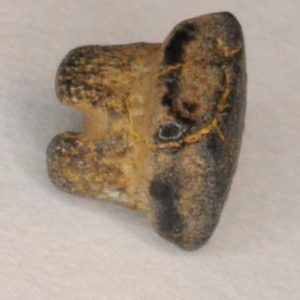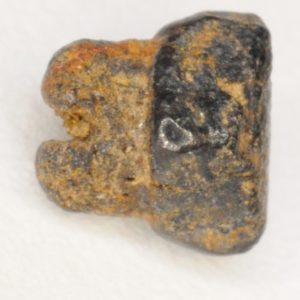NJfossils.com
"Fossils aren't a hobby, they're a lifestyle."Cow-Nosed Ray (Rhombodus laevis)
Age – Late Cretaceous; Commonality – Teeth: very common, Possible Vertebrae or Dermal Denticles: uncommon; Size – teeth: ~5mm, Possible Vertebrae: 1/4-11/8 inches, Possible Dermal Denticles: 1/4-3/4 inches
This was a common type of ray. Its teeth are the most common elements recovered. They had a crown that is the shape of a rhombus (hence their genus name) and a bilobate root which possesses foramina in between the root lobes and on the sides.
The vertebrae and dermal denticles are probably found, but it would be difficult or impossible to attribute them to this specific ray because of no associated remains.
Teeth
Dermal Denticles
This denticle is the most common classical type found.
The rays Rhombodus laevis, Brachyrhizodus wichitaensis, and Pseudohypolophus mcnultyi had denticles which were relatively large (~ 1/8 – ¾ inches). They were approximately tear-dropped in shape and had a protrusion around the middle, when looking at them in occlusal view. The denticles of B. wichitaensis were said to differ from R. laevis denticles by the presence of small dots on the surface. R. laevis had striations. The denticles of P. mcnultyi are said to have resembled the denticles of B. wichitaensis. These ideas are not entirely clear. There is a chance that the small dots/bumps fell off easily pre-fossilization, similar to Hybodont spines which may have lost their tubercles in a similar manner (information from Steve B.). It might be that the denticles of the rays looked very similar. These denticles’ commonality is “very uncommon.” Associated remains need to be found in order to attribute the denticles to a specific type of ray.
This one has a different surface texture/covering than the first dermal denticle presented. This one clearly has a surficial apatite dentine layer on collagen, while the first one seems to be composed of solely collagen (it doesn’t seem to be worn off, but could be). Information from: http://www.elasmo-research.org/education/white_shark/scales.htm




































